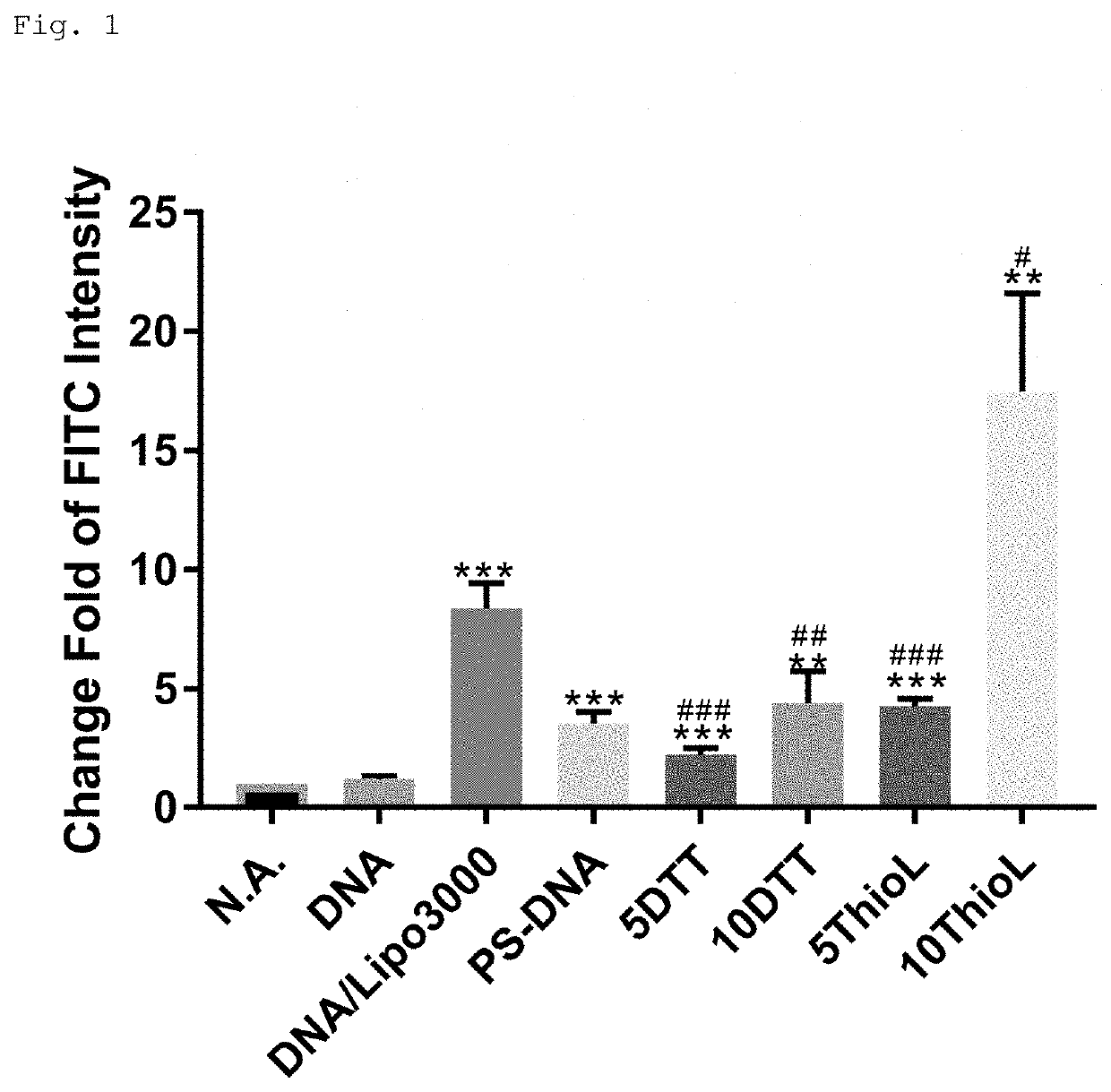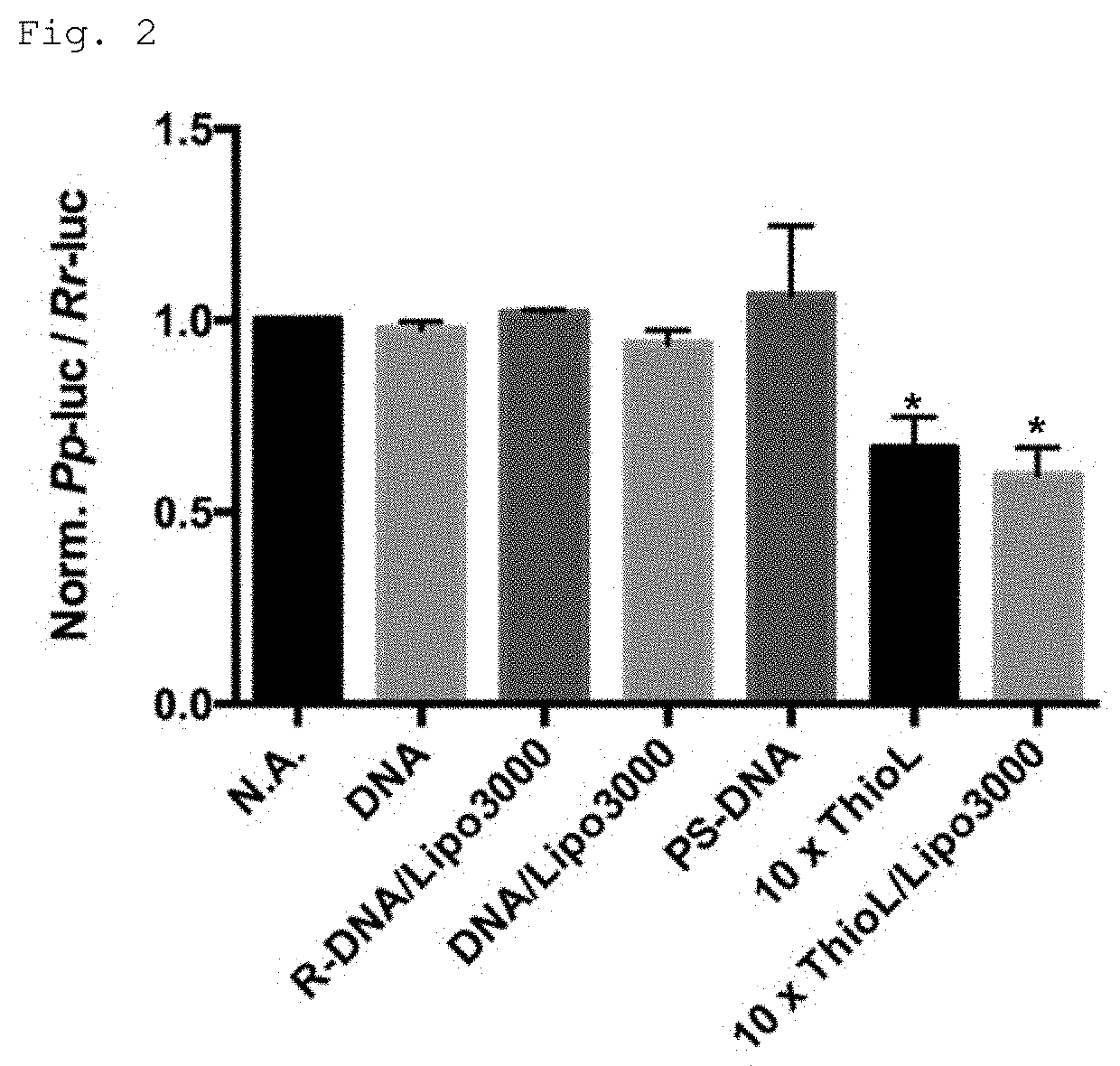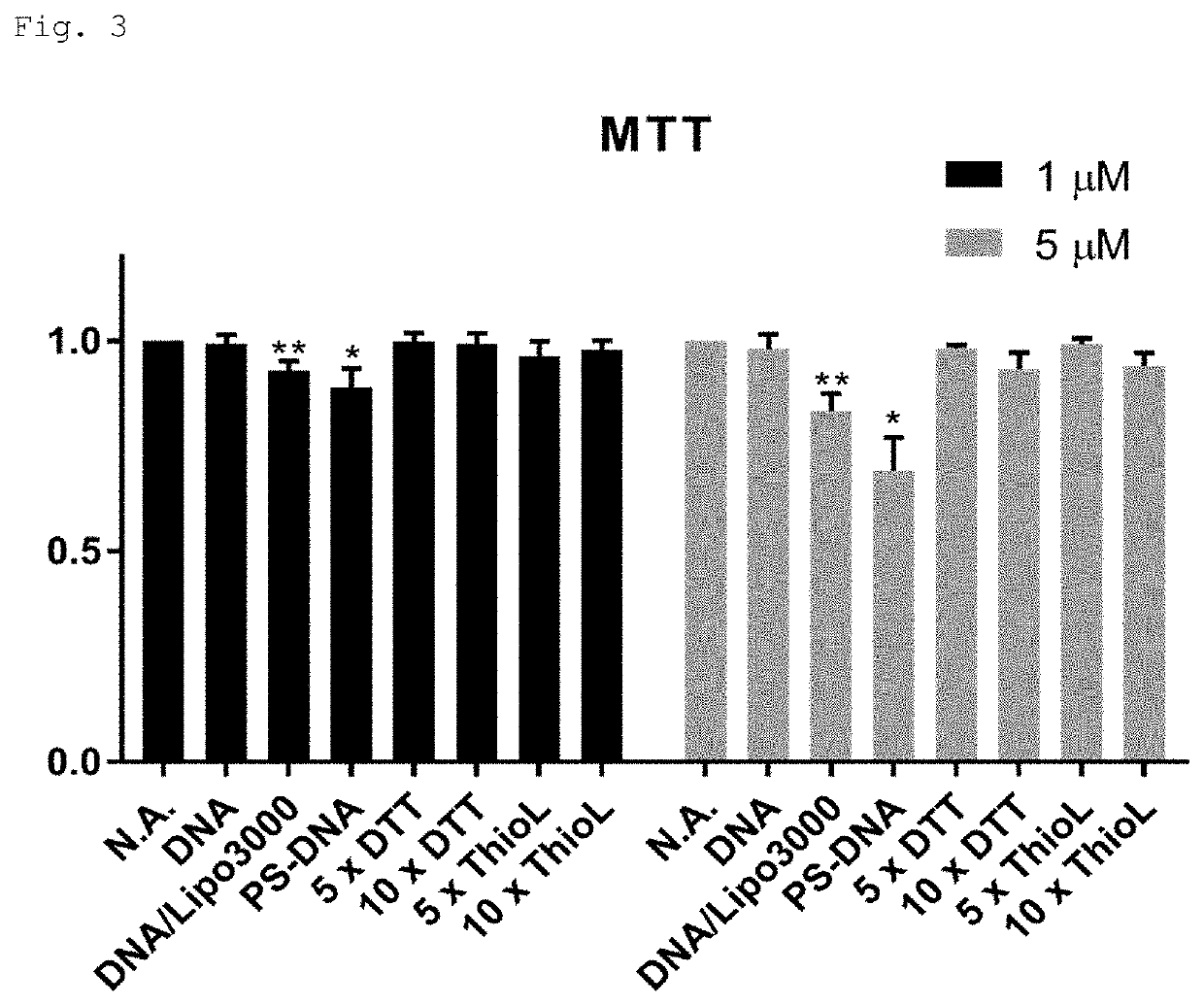Modified polynucleotide
a technology of polynucleotide and polynucleotide, which is applied in the field of modified polynucleotide, can solve the problems of low penetration efficiency across the cell membrane, and achieve the effects of less cytotoxic form, convenient delivery of polynucleotide, and efficient delivery into the cell
- Summary
- Abstract
- Description
- Claims
- Application Information
AI Technical Summary
Benefits of technology
Problems solved by technology
Method used
Image
Examples
examples
[0090]The present invention is described in detail in the following based on examples; however, the present invention is not limited by these examples.
Reference Example 1. Synthesis of DTT-Type Phosphoramidite Monomer
[0091]DTT-type phosphoramidite monomer (compound 5) was synthesized using the following synthesis scheme.
[0092]
Synthesis of Compound 3
[0093]Dimethyl sulfoxide (0.78 mL) was added to dithiothreitol (DTT) (1.54 g, 10.0 mmol) and stirring was carried out for 4 hours at 110° C.
[0094]After cooling to room temperature, the produced solid was suspended in dichloromethane and was filtered off by suction filtration. The filtered-off solid was washed with a small amount of ethyl acetate and was dried in a vacuum to obtain the target compound 3 as a white solid (1.26 g, 82%).
[0095]1H-NMR (400 MHz, DMSO-d6) δ: 5.24 (2H, d, J=3.2 Hz), 3.33 (2H, br. s), 3.03 (2H, d, J=13.2 Hz), 2.74 (1H, d, J=13.2 Hz), 2.72 (1H, d, J=13.6 Hz).
Synthesis of Compound 4
[0096]Compound 3 (1 g, 6.57 mmol) w...
reference example 2
Type Phosphoramidite Monomer
[0101]A ThioL-type phosphoramidite monomer (compound 4) was synthesized according to the following synthesis scheme. 3-mercaptopropanol was used as the starting material, and compound 1 was obtained by conversion of the thiol group to the disulfide structure. The ThioL-type phosphoramidite monomer 4 was obtained by coupling with the separately synthesized C3 linker derivative 3.
[0102]
Synthesis of Compound 1
[0103]3-Mercaptopropanol (808 μL, 9.36 mmol) was added dropwise while stirring under an argon atmosphere to an acetonitrile solution (36 mL) of di-tert-butyl 1-(tert-butylthio)-1,2-hydrazinedicarboxylate (3.0 g, 9.36 mmol) and triethylamine (1.09 mL, 7.80 mmol). After stirring overnight at room temperature, the reaction solution was concentrated under reduced pressure. Hexane (10 mL) was added to the resulting residue and the produced precipitate was filtered off and removed and the filtrate was concentrated under reduced pressure. The residue was purif...
example 1
of DTT-Type Modified Polynucleotide (5DTT-DNA
[0113]A DTT-type modified polynucleotide (5DTT-DNA) in which the 5′-terminal of DMA composed of the base sequence given by 5′-AACCGCTTCCCOGACTTCC (SEQ ID NO:1) was ligated with the structure given by the following formula (A):
[0114]
and the 3′-terminal was fluorescent labelled (FAM label), was synthesized by a conventional method using a DNA / RNA solid-phase synthesizer (NTS M-2-MX, Nihon Techno Service Co., Ltd.) and using β-cyanoethyl phosphoramidite (Glen Research), the DTT-type phosphoramidite monomer (Reference Example 1), and 6-FAM. SEQ ID NO:1 is an antisense sequence of the luciferase gene originating from P. pyralis. The obtained modified polynucleotide was subjected to cleavage from the resin and deprotection by conventional methods and was purified by high-performance liquid chromatography. Column: C18Hydrosphere 10×250 mm (YMC Co., Ltd.); column temperature: room temperature; measurement wavelength: 260 nm; mobile phase: 50 mM t...
PUM
| Property | Measurement | Unit |
|---|---|---|
| body weight | aaaaa | aaaaa |
| body weight | aaaaa | aaaaa |
| body weight | aaaaa | aaaaa |
Abstract
Description
Claims
Application Information
 Login to View More
Login to View More - R&D
- Intellectual Property
- Life Sciences
- Materials
- Tech Scout
- Unparalleled Data Quality
- Higher Quality Content
- 60% Fewer Hallucinations
Browse by: Latest US Patents, China's latest patents, Technical Efficacy Thesaurus, Application Domain, Technology Topic, Popular Technical Reports.
© 2025 PatSnap. All rights reserved.Legal|Privacy policy|Modern Slavery Act Transparency Statement|Sitemap|About US| Contact US: help@patsnap.com



